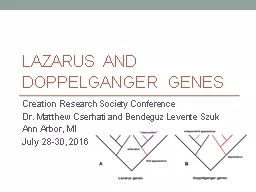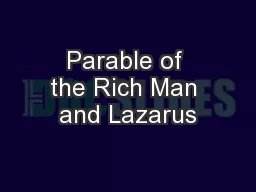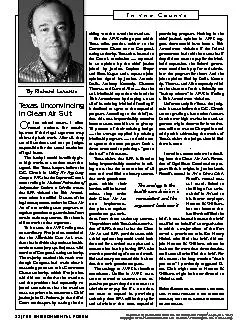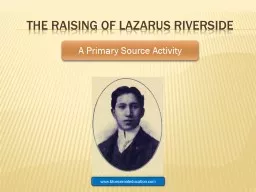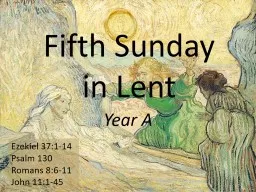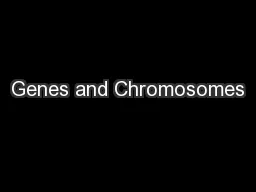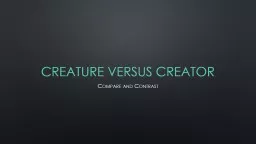PPT-Lazarus and doppelganger genes
Author : cheryl-pisano | Published Date : 2017-05-12
Creation Research Society Conference Dr Matthew Cserhati and Bendeguz Levente Szuk Ann Arbor MI July 2830 2016 Introduction There are 10 10 10 12 different
Presentation Embed Code
Download Presentation
Download Presentation The PPT/PDF document "Lazarus and doppelganger genes" is the property of its rightful owner. Permission is granted to download and print the materials on this website for personal, non-commercial use only, and to display it on your personal computer provided you do not modify the materials and that you retain all copyright notices contained in the materials. By downloading content from our website, you accept the terms of this agreement.
Lazarus and doppelganger genes: Transcript
Download Rules Of Document
"Lazarus and doppelganger genes"The content belongs to its owner. You may download and print it for personal use, without modification, and keep all copyright notices. By downloading, you agree to these terms.
Related Documents

